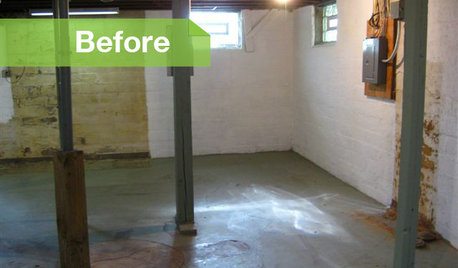Did this engine have problems? Kohler CV730
baymee
12 years ago
Related Stories

LANDSCAPE DESIGNProblem Solving With the Pros: An Abundant Garden Stretches Its Means
Swaths of resilient, eye-catching plants thrive with little care or resources in the landscape of a Pennsylvania farmhouse
Full Story
KITCHEN DESIGNShow Us Your Fabulous DIY Kitchen
Did you do a great job when you did it yourself? We want to see and hear about it
Full Story
UNIVERSAL DESIGNBungalow Bathroom Gains New Accessibility
Better design and functionality make life easier for a homeowner in a wheelchair
Full Story
HOUZZ TOURSMy Houzz: A Prefab Modern Farmhouse Rises in Vermont
A prefab borrows from the simplicity of barns to suit its family and the Vermont countryside
Full Story
BASEMENTSBasement of the Week: Modern Style Converts an Empty Concrete Box
From raw wasteland to fab living, sleeping and storage space, this snazzy basement now covers all the angles
Full Story
MOST POPULAR8 Little Remodeling Touches That Make a Big Difference
Make your life easier while making your home nicer, with these design details you'll really appreciate
Full Story
ARCHITECTUREHouzz Tour: Shipping Containers Make for an Unusual Home
Recycling hits the big time as a general contractor turns 4 metal boxes into a decidedly different living space
Full Story
ARCHITECTURE15 Smart Design Choices for Cold Climates
Keep your home safe and comfortable in winter by choosing the right home features and systems
Full Story
HOME TECHMeet the New Super Toilets
With features you never knew you needed, these toilets may make it hard to go back to standard commodes
Full Story
MOST POPULARHow to Choose the Right Kitchen Sink
Learn about basin configurations, sink shapes, materials and even accessories and specialty sinks
Full Story





tomplum
baymeeOriginal Author
Related Professionals
Deer Park Landscape Architects & Landscape Designers · Stoughton Landscape Contractors · Beachwood Landscape Contractors · Federal Way Landscape Contractors · Fort Payne Landscape Contractors · Hilton Head Island Landscape Contractors · Oviedo Landscape Contractors · Pompton Lakes Landscape Contractors · Rosemount Landscape Contractors · San Antonio Landscape Contractors · Soddy Daisy Landscape Contractors · Annapolis Window Contractors · Bellwood Window Contractors · Jupiter Window Contractors · Minnetonka Window Contractorsmownie
baymeeOriginal Author
mownie
tomplum
baymeeOriginal Author
bill_kapaun
tomplum
baymeeOriginal Author
tomplum
baymeeOriginal Author
tomplum